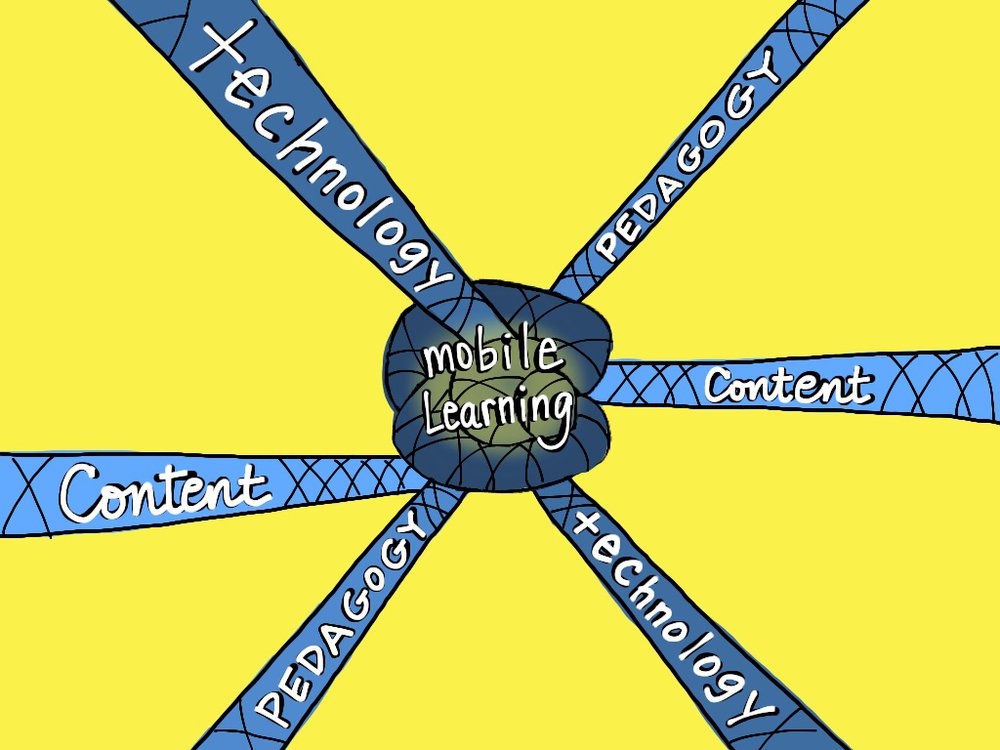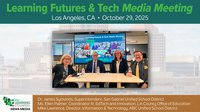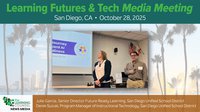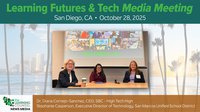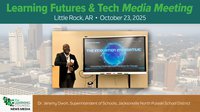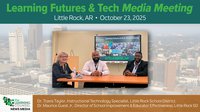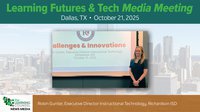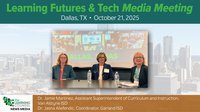When a school makes the move to use mobile technology in the classroom, how does it (and its parents, and students) know the devices will impact learning? How do districts know that those expensive tablets aren’t just being used to read ebooks, but to enable mobile learning? And, further, what is mobile learning?
Mobile learning is more than just using an iPad in the classroom; it encompasses the multi-media, connected way in which learning is amplified through the use of a mobile device, allowing students to learn anytime, anywhere. So mobile learning is, of course, dependent upon having a mobile device, but it is more about the experience that a mobile device enables, when combined with sound pedagogy and quality content.
In a larger sense, mobile learning implies adapting and building upon the latest advances in mobile technology, reexamining the modes and models of teaching and learning, and blurring the lines between formal and informal learning. It embodies and facilitates the understanding of what it means to be a lifelong learner and what it takes to thrive in today’s workplace.

Mobile learning offers tremendous benefit to traditional, brick and mortar classroom learning. Through creative and appropriate use of mobile devices, today’s educators can more effectively engage and interest students in ways they never could with traditional pedagogical tools.
Mobile devices alone are not effective facilitators of mobile learning. But how do we move from having hardware to engaging in mobile learning? Three key factors enable mobile learning to take hold. Technology, pedagogy and content are all tied up in an inextricable knot that together enable mobile learning. Each facet must be given its due to set the stage for success in the mobile classroom, and as you will note, they are inextricably related to one another.
• Pedagogy: As we continue our steady march toward an increasingly digital society, and a digital classroom, teachers need not fear they’ll be replaced by a robot; pedagogy is still a vital part to the mobile learning equation. Indeed, when mobile devices are added to the classroom setting, the role of the teacher becomes even more important: a curator of content and a master of technological tools.
Successful mobile teachers will continue to base teaching activities in sound, albeit evolving, pedagogy, but they will also be able to effectively reimagine how technology can improve their practice. Just as we cannot assume that because kids use smart phones all the time they’ll know how to use them appropriately to learn, teachers will also need professional development to be able to maximize the effectiveness of mobile devices for learning.
• Technology: Having excellent technology is another huge enabler of mobile learning, and one with a lower barrier to entry than ever before. Mobile devices remain the most accessible technology we’ve seen yet in the educational setting. With a lower price tag than previous educational technology (an iPad is a fraction of the cost of a typical laptop computer of equivalent quality), more students can access state of the art technology in school than ever before. High quality technology is a huge factor in taking learning to the next level with technology.
There are many levels of technological implementations, and these clearly present differences for the mobile classroom. Some students have a 1:1 set up, while other schools have a few tablets in the library they use from time to time. These inequities, alongside Wi-Fi and poorly executed networks and unnecessarily limiting policies on the use of mobile devices, present important barriers to the realization of the technology side of mobile learning.
• Content: Finally, effectively employing mobile learning involves reimagining the curriculum. Teachers in mobile classrooms are faced with an unprecedented level of choice in content and resources, enabling a more interactive, dynamic and personalized learning experience for their students. Mobile learning represents moving beyond a “digital version” of old resources; reading a static document on a tablet is really no different than reading a textbook.
Mobile teachers are responsible for actually assembling resources and curating them in a way that is new and better than the traditional way a lesson was taught. App-smashing, the practice of putting apps together to accomplish a task, involves a huge amount of creativity and knowledge of what content is available, as well as pedagogy.
So, if a school gets some tablets, whether it’s one for every student or just a few for a cart, how can they make sure these devices are used to promote mobile learning, rather than simply used to reinforce traditional ways of learning? For mobile learning to take hold, these three factors need to be addressed and understood. To be sure, learning is possible without technology; for decades, students learned with only content and pedagogy.
The technology thread adds a level of possibility and excitement, offering more chances for deeper learning. The presence of all three of these factors can serve to make a much better learning experience for the student, one that is surprisingly attainable to more students than ever before.

